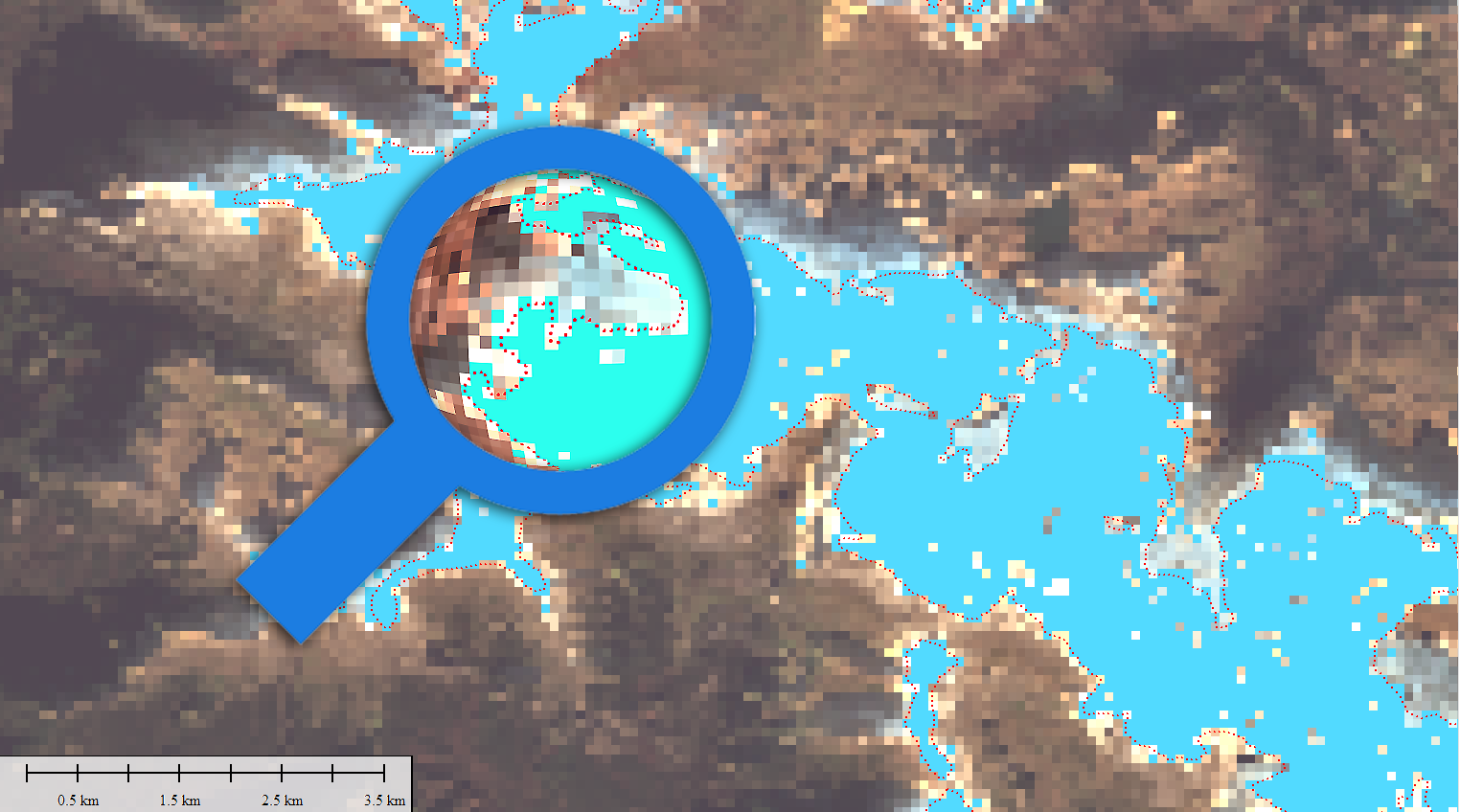Las restricciones más duras de emergencia por sequía se extenderán a más de seis millones de personas de los 202 municipios de Barcelona y algunas poblaciones de Girona. Así lo ha anunciado este jueves la Generalitat, que suma estas localidades a las 37 (125.000 habitantes) de las comarcas de Alt Empordà, Baix Camp y Baix Llobregat, que ya estaban en la fase más severa desde agosto. Esto significa que casi el 80% de la población catalana vive en una zona en emergencia por la crisis hídrica.
Category Archives: Servicios de Mapas
No words (or almost)
Visualization 12-11-4 Sentinel 2 in relation to events in and around the Gaza Strip in early October 2023. It is difficult to remain aseptic even when talking about something technical. I will only say that I am ashamed of the world today. I am ashamed of the rulers and the ignorance of those who followContinue reading “No words (or almost)”
Measuring snow coverage using EOB – Earth Observation – Sentinel HUB
Playing with Sentinel 2 images I realized that the amount of snow this year has been very low compared to last winter. Here are a couple of images from January 2022 and 2023 of the Canfranc – Paticosa – Jaca area. One of the most interesting things about this EO browser is that in addition to a standard 2D visualisation, we can visualise in 3D. Here is an video example. Another interesting thing is to be able to quantify the snowfall. There is a snow classifier based on NSDI (Normalized Difference Snow Index, The Normalized Difference Snow Index (NDSI) snow cover is an index that is related to the presence of snow in a pixel and is a more accurate description of snow detection as compared to Fractional Snow Cover (FSC).
Inland Water levels… Globally. Copernicus did it again!
The Water Observatory is an Earth-observation-based solution that provides reliable and timely information about surface water levels of waterbodies across the globe. All observations are provided and can be explored interactively via the Water Observatory Dashboard or via RESTful API. The Water Observatory provides a valuable service to local authorities, governmental agencies, natural parks and reserves, agricultural ministries and agencies, stakeholders in food and energy production, and citizens alike.
Google Earth Engine and Dynamic World
Let me please introduce you this “new” LULC source I have come across with recently. The potential of this 10m “clutter” source is being able to acquire data from a few days ago instead of using outdated “very old” 2020 vintage datasets. I know if these days something 2020 is very old then myself, born in 1972 then i’m older than the riverside, older than peeing in a wall, even older than Methuselah. Yes, that’s the way it is nowadays.
Google Earth Engine is a geospatial processing service where you can perform geospatial processing at scale, powered by Google Cloud Platform. The purpose of Earth Engine is to:
Provide an interactive platform for geospatial algorithm development at scale
Enable high-impact, data-driven science
Make substantive progress on global challenges that involve large geospatial datasets
¡Viento del Sahara en España! ¡Sí!
De repente se levanta uno y ve los coches, los marcos de las ventanas y las aceras llenos de arena… ¿Qué es esto?, ¡Uno quiere comprender más en detalle! Si esto es en Madrid, qué no ocurrirá en Murcia (que está de camino)!! 🙂 Lo cierto es que si tomamos las imágenes del SENTINEL 5P Aerosol index podemos ver cómo en esa longitud de onda encontramos aerosoles. ¡Y muchos! ¿Y hacia dónde se desplazan?. Directos al centro de la península.
Imágenes satélite Landsat 8 L1 y Sentinel 2 L2A del volcán de La Palma en erupción (+Sentinel-5 SO2+Ventusky)
Como vemos en el ejemplo del volcán de La Palma, después de la reciente erupción del 19 de Septiembre, las bandas del infrarrojo de onda corta (SWIR) identifican variaciones de temperatura en superficie, por lo que las composiciones RGB a falso color, combinando bandas SWIR y bandas en el visible, son perfectas para identificar el curso de la colada de lava a lo largo del tiempo.
El láser desvela toda la grandeza de la civilización maya (Fuente: El País)
Esta mañana encontré este interesante reportaje sobre el LIDAR (Laser Imaging Detection and Ranging, detección y localización de imágenes por láser) la tecnología con la que trabajo desde hace años y que a algunos les parece recién inventada, jeje.
Retirada de vehículos por la grúa municipal en Madrid: Una aproximación visual usando Datos Abiertos.
Solo estoy tomando en cuenta 185 puntos debido a las limitaciones de mi servidor de geocode https://www.mapdevelopers.com/batch_geocode_tool.php pero muestra que los datos tienen sentido, siendo el barrio de Sol el que concentra una densidad mayor de actuaciones de la grua municipal. Para el fondo, he usado una conexón WMS a OSM y geometrías de Barrios tomadasContinue reading “Retirada de vehículos por la grúa municipal en Madrid: Una aproximación visual usando Datos Abiertos.”
Descargas del CNIG. Open Source bien hecho!
Hola amigos del GIS, Por motivos de trabajo que no vienen al caso, he tenido que bucear de manera sistemática la web de descargas del CNIG. http://centrodedescargas.cnig.es/CentroDescargas/inicio.do Una maravilla. Por motivos que tampoco viene al caso, he de hacer esto mismo de vez en cuando en todos los Institutos cartográficos del mundo y el delContinue reading “Descargas del CNIG. Open Source bien hecho!”








